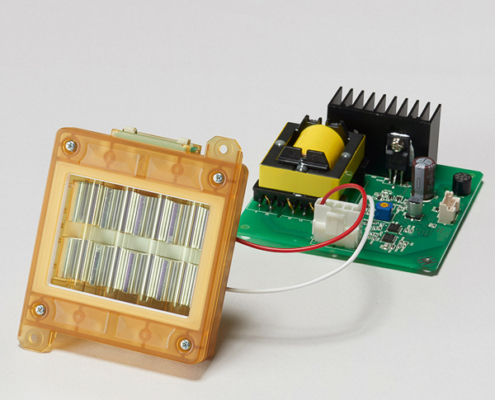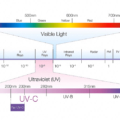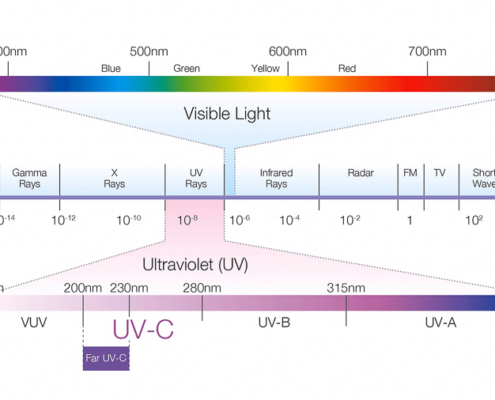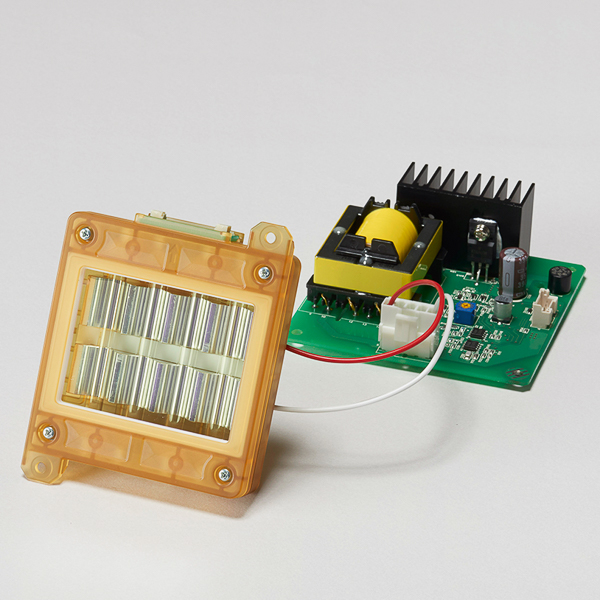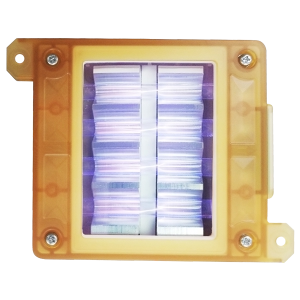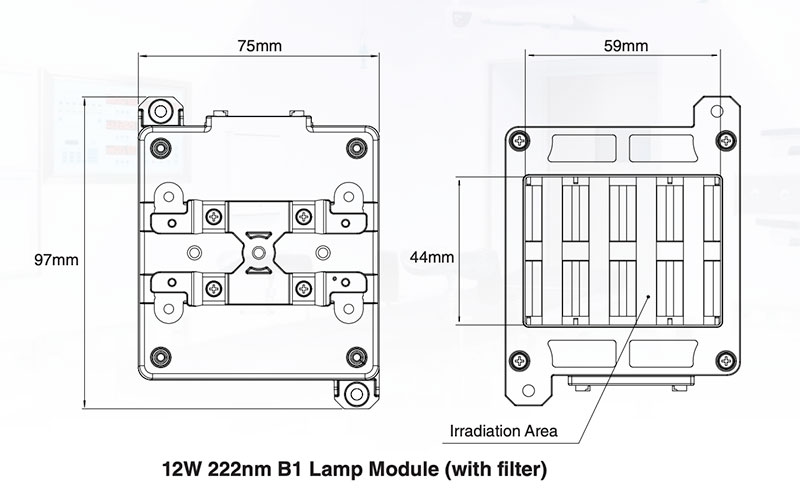Ushio’s filtered 222nm Far UV-C excimer lamp modules for microbial reduction applications.
Filtered Care222 modules can be safely used in unoccupied and occupied spaces without posing a health risk to humans when used within the current exposure limits recommended by the American Conference of Governmental Industrial Hygienists (ACGIH®) or the requirements of IEC 62471. Exposure within the current ACGIH recommendations and IEC requirements allow microbial reductions using 222nm far-UVC light sources in occupied spaces. Recent studies indicate that higher doses of filtered UV light emitted from the Care222 modules pose a minimal health risk to human skin or eyes.
Features of the Care222 module allow customers to obtain 100% light output in less than a second, whereas conventional germicidal lamps start at only 50% output and take several minutes to achieve 100% output.
The featured Care222 12W B1 module contains 4 highly efficient 222nm excimer lamps and a patented filter that eliminates dangerous longer wavelengths of more than 230nm in an easy to install housing.
Features and Benefits
- Proprietary Safety Filter Technology Included to Ensure Narrowband 222nm Emission
- Mercury Free – Environmental Friendly
- Large Production Capacity
- Effective Germicidal Wavelength
- Effective Reduction of Viruses, Bacteria, and Spores
- Wide Operating Temperature
- Instantaneous On/Off at Full Output Power
- No Lifetime Reduction by Frequent On/Off Cycles
- Minimal Ozone Emission
An explanation of irradiance vs. fluence rate
In common conversations, the terms fluence rate and irradiance are often used interchangeably. Reasons for this are that the unit of measure is the same – mW/cm2, and there are essentially no fluence rate meters in the market. Moreover, when measurements of virus or bacteria reductions are performed, the beam characteristic is typically reduced to an almost parallel beam and the sample is placed perpendicular to the beam (sometime called collimated beam). In such cases, the fluence rate is equal to the irradiance
In UV-C air cleaning applications the situation becomes much more complicated, since an entire room may be irradiated in a way where every part of the volume receives different amounts of photons, potentially from all kind of directions. In such cases, the Average Fluence Rate of the entire volume becomes an essential parameter.
Moreover, the same average fluence rate is also an essential parameter for the generation of ozone by 222nm and photochemical reactions.
This article explains the important differences between irradiance and fluence rate and gives advice how to estimate average fluence rate in a room.



